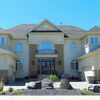Processing Your Payment
Please do not leave this page until complete. This can take a few moments.
- News
-
Editions
View Digital Editions
Biweekly Issues
- May 13, 2024
- April 29, 2024
- April 15, 2024
- April 1, 2024
- March 18, 2024
- March 4, 2024
- February 19, 2024
- February 5, 2024
- January 22, 2024
- + More
Special Editions
- Lists
- Viewpoints
- HBJ Events
- Business Calendar
- Custom Content
CRDA’s Freimuth: UConn dorm project would be transformative to downtown Hartford
 HBJ PHOTO | DAVID KRECHEVSKY
64 Pratt St., Hartford.
HBJ PHOTO | DAVID KRECHEVSKY
64 Pratt St., Hartford.
The University of Connecticut’s effort to create a dormitory for its downtown Hartford branch campus would include nearly $28 million in financial support from the Capital Region Development Authority and a private lender.
CRDA’s Housing & Neighborhood Committee convened Thursday morning to discuss the proposal and unanimously approved sending it to the full board for consideration.
According to CRDA Executive Director Michael Freimuth, the plan would create a student dormitory at 64 Pratt St. The six-floor building is an annex to 242 Trumbull St., which was acquired last year by Shelbourne Global Solutions. Shelbourne, based in Brooklyn, New York, is the central business district’s largest office landlord.
Shelbourne has partnered with Hartford-based real estate developer and investor Lexington Partners and Hartford-based LAZ Parking to develop the project.
Freimuth said the proposal would require creating a “condo structure” for the dormitory portion of the building on the upper floors, separating them from the first two floors that have a mix of retail and back office service space.
The dormitory space would be approximately 84,000 square feet and accommodate 202 beds in approximately 75 to 80 single-, double-, and four-bed suites.
The development deal would total $27.9 million, Freimuth said, including a first loan of $10.06 million; $10 million in interim financing provided by the CRDA; $3 million in equity; and approximately $4.9 million in city and state grants.
The CRDA interim financing would be a 20-year loan but would be brought down to $7.5 million after three years, Freimuth said.
Freimuth said UConn hopes to open the dorm by the fall of 2025, which he admitted is an “aggressive” timetable given the approvals required. In addition to needing approval from the CRDA board of directors and the UConn Board of Trustees, the state Bond Commission also must approve the financing plan. The project also is subject to approval by city land-use boards.
“Failure to that will push it out to ‘26, since UConn does not normally occupy (dorms) mid-term,” he said.
Freimuth told the committee that the building is ideally situated for the project. “This building, in ways that no one really foresaw, kind of jumped to the front real quick,” he said.
The annex on Pratt Street, which is closed to vehicle traffic, is about a 10-minute walk from the UConn Hartford campus, located in the former Hartford Times building on Prospect Street. It is also a half-block from the XL Center, where UConn is finalizing a five-year lease for space it will retrofit to host a new agricultural and food science program, sports medicine center, mental health clinic and two lecture halls.
The UConn School of Business is also nearby at 100 Constitution Plaza.
Freimuth described the project as transformative.
“It’s a reminder of the influence of the school and its impact and contributions to the downtown core,” he said. “It would put 200-plus kids on Pratt Street. It’s putting a talent pool on the street, helping to reinforce businesses’ demand for labor. There’s a lot of elements in this that are not in the numbers.”
Committee members generally agreed, though member Robert Patricelli asked whether CRDA funds had ever previously been used for a project with a public or quasi-public institution that could instead go directly to the state Bond Commission for funding.
Freimuth said there had been previous instances, including some projects with the state Department of Administrative Services. He added that because UConn would be the tenant “it helps the underwriting.”
Patricelli also asked whether the reconfiguration of the building for dorm rooms would make it difficult to convert to something else if necessary in the future.
Jane Davey, director of asset management and acquisitions for LAZ Investments, said there would be some difficulty if the building needed to be converted to something else, but that it would be no more difficult than converting a hotel to a residential space.
“If you did need to convert to something residential, that infrastructure remains,” she said, adding, “it’s not at the magnitude as if we had to convert it from office space.”
Freimuth said the design of the interior will be done to UConn’s specifications, which was explained by UConn Provost Anne D’Alleva.
“The way that this building will be configured is suite-style housing, which is preferred by students today,” she said. “It will look like small apartments with a central living space, a small kitchen and a bathroom, and bedrooms that can be occupied by one student or they can share bedrooms.”
D’Alleva said students can eat in their suites or dine in a cafeteria being installed in the Hartford Times campus building. “For most students it will be a hybrid arrangement, eating partly at home and partly on campus and, we hope, partly in the community,” she said.
She added that a residence hall is not just an apartment building for students, and noted that the annex building has a large atrium that makes it an ideal gathering spot.
“You need to have a communal life,” she said. “That atrium is really a spectacular space. We can hold events there, provide a computer lab, soft seating, a game room. It’s a space that will really let us develop a communal life for students.”
Committee Chair Joanne Berger-Sweeney, who is president of Trinity College, praised the project as “a very positive thing,” but said she was concerned that another building would be removed from the city’s tax rolls.
Freimuth said that would not be the case. “There will be a tax agreement between the city8 and the developer that will keep it a taxable piece of real estate,” he said.
Committee member Randal Davis, interim director of development services for the city, also praised the project.
“I think it’s an excellent addition to the downtown world that we have here,” he said. “It is supported by the administration and, long term, will be a continued benefit to the city.”

2022 Giving Guide
This special edition informs and connects businesses with nonprofit organizations that are aligned with what they care about. Each nonprofit profile provides a crisp snapshot of the organization’s mission, goals, area of service, giving and volunteer opportunities and board leadership.
Learn more
Subscribe
Hartford Business Journal provides the top coverage of news, trends, data, politics and personalities of the area’s business community. Get the news and information you need from the award-winning writers at HBJ. Don’t miss out - subscribe today.
Subscribe
2024 Book of Lists
Delivering Vital Marketplace Content and Context to Senior Decision Makers Throughout Greater Hartford and the State ... All Year Long!
Read Here-
2022 Giving Guide
This special edition informs and connects businesses with nonprofit organizations that are aligned with what they care about. Each nonprofit profile provides a crisp snapshot of the organization’s mission, goals, area of service, giving and volunteer opportunities and board leadership.
-
Subscribe
Hartford Business Journal provides the top coverage of news, trends, data, politics and personalities of the area’s business community. Get the news and information you need from the award-winning writers at HBJ. Don’t miss out - subscribe today.
-
2024 Book of Lists
Delivering Vital Marketplace Content and Context to Senior Decision Makers Throughout Greater Hartford and the State ... All Year Long!
ABOUT
ADVERTISE
NEW ENGLAND BUSINESS MEDIA SITES
No articles left
Get access now
In order to use this feature, we need some information from you. You can also login or register for a free account.
By clicking submit you are agreeing to our cookie usage and Privacy Policy
Already have an account? Login
Already have an account? Login
Want to create an account? Register
Get access now
In order to use this feature, we need some information from you. You can also login or register for a free account.
By clicking submit you are agreeing to our cookie usage and Privacy Policy
Already have an account? Login
Already have an account? Login
Want to create an account? Register






0 Comments